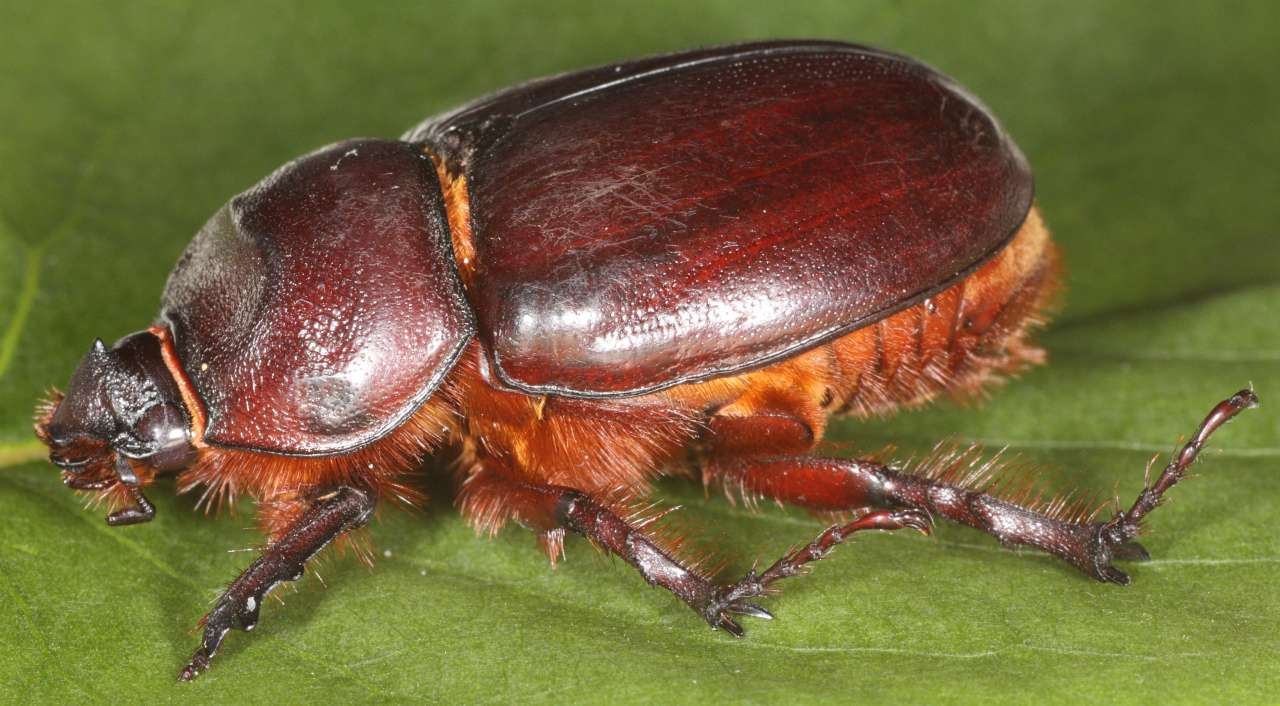European rhinoceros beetle on:
[Wikipedia]
[Google]
[Amazon]
The European rhinoceros beetle (''Oryctes nasicornis'') is a large flying 

beetle
Beetles are insects that form the order Coleoptera (), in the superorder Endopterygota. Their front pair of wings are hardened into wing-cases, elytra, distinguishing them from most other insects. The Coleoptera, with about 400,000 describ ...
belonging to the subfamily Dynastinae
Dynastinae or rhinoceros beetles are a subfamily of the scarab beetle family (Scarabaeidae). Other common names – some for particular groups of rhinoceros beetles – include Hercules beetles, unicorn beetles or horn beetles. Over 1 ...
.


Subspecies
* ''Oryctes nasicornis afghanistanicus'' Endrödi, 1938 * ''Oryctes nasicornis chersonensis'' Minck, 1915 * ''Oryctes nasicornis corniculatus'' Villa & Villa, 1833 * ''Oryctes nasicornis edithae'' Endrödi, 1938 * ''Oryctes nasicornis grypus'' (Illiger, 1803) * ''Oryctes nasicornis hindenburgi'' Minck, 1915 * ''Oryctes nasicornis holdhausi'' Minck, 1914 * ''Oryctes nasicornis illigeri'' Minck, 1915 * ''Oryctes nasicornis kuntzeni'' Minck, 1914 * ''Oryctes nasicornis latipennis'' Motschulsky, 1845 * ''Oryctes nasicornis mariei'' (Bourgin, 1949) * ''Oryctes nasicornis nasicornis'' (Linnaeus, 1758) * ''Oryctes nasicornis ondrejanus ''Minck, 1916 * ''Oryctes nasicornis polonicus'' Minck, 1916 * ''Oryctes nasicornis przevalskii'' Semenow & Medvedev, 1932 * ''Oryctes nasicornis punctipennis'' Motschulsky, 1860 * ''Oryctes nasicornis shiraticus'' Endrödi & Petrovitz, 1974 * ''Oryctes nasicornis transcaspicus'' Endrödi, 1938 * ''Oryctes nasicornis turkestanicus'' Minck, 1915Description
''Oryctes nasicornis'' reach a length of , with a maximum of .Marek Bunalski. Die Blatthomkäfer Mitteleuropas Coleoptera, Scarabaeoidea. Bratislava, 1999 It is one of the largest beetles found in Europe. Elytra are reddish brown with a glazed appearance, while head and pronotum are slightly darker. The underside of the body and the legs are covered with long red hair. It is asexually dimorphic
Sexual dimorphism is the condition where the sexes of the same animal and/or plant species exhibit different morphological characteristics, particularly characteristics not directly involved in reproduction. The condition occurs in most ani ...
species. The male's head is topped by a long curved horn (hence its common name), while the females have no horns.
Dim, from the 1998 Disney
The Walt Disney Company, commonly known as Disney (), is an American multinational mass media and entertainment conglomerate headquartered at the Walt Disney Studios complex in Burbank, California. Disney was originally founded on October ...
/Pixar
Pixar Animation Studios (commonly known as Pixar () and stylized as P I X A R) is an American computer animation studio known for its critically and commercially successful computer animated feature films. It is based in Emeryville, Californ ...
animated film ''A Bug's Life
''A Bug's Life'' is a 1998 American computer-animated comedy film produced by Pixar Animation Studios for Walt Disney Pictures. It was the second feature-length film produced by Pixar. Directed by John Lasseter and co-directed by Andrew Stant ...
'', is a European rhinoceros beetle voiced by (Brad Garrett
Bradley Henry Gerstenfeld (born April 14, 1960), known professionally as Brad Garrett, is an American actor and stand-up comedian. Possessing a distinctive deep voice, he has appeared in numerous television and film roles in both live-action and ...
).
Distribution
''Oryctes nasicornis'' inhabits thePalaearctic
The Palearctic or Palaearctic is the largest of the eight biogeographic realms of the Earth. It stretches across all of Eurasia north of the foothills of the Himalayas, and North Africa.
The realm consists of several bioregions: the Euro-Sibe ...
region, excluding the British Isles. It is the only representative of the Dynastinae
Dynastinae or rhinoceros beetles are a subfamily of the scarab beetle family (Scarabaeidae). Other common names – some for particular groups of rhinoceros beetles – include Hercules beetles, unicorn beetles or horn beetles. Over 1 ...
family found in Northern Europe. It is widespread in the Mediterranean basin up to Pakistan
Pakistan ( ur, ), officially the Islamic Republic of Pakistan ( ur, , label=none), is a country in South Asia. It is the world's fifth-most populous country, with a population of almost 243 million people, and has the world's second-lar ...
, the Near East and North Africa
North Africa, or Northern Africa is a region encompassing the northern portion of the African continent. There is no singularly accepted scope for the region, and it is sometimes defined as stretching from the Atlantic shores of Mauritania in ...
.
Habitat
The rhinoceros beetle lives on wood, and the large larvae can be found in rotting wood stumps and around sawdust. At the margin of its distribution, the beetle is often found in connection with sawmills and horse racing tracks.Life cycle
The larvae grow in decaying plants feeding on woody debris (xylophagy
Xylophagy is a term used in ecology to describe the habits of an herbivorous animal whose diet consists primarily (often solely) of wood. The word derives from Greek ''ξυλοφάγος'' (''xulophagos'') "eating wood", from ''ξύλον'' (') ...
), generally non-resinous. They can reach a length of . The development period lasts 2 to 3 or 4 years. The adult size can be influenced by the quality and abundance of food.
The mammoth wasp (''Megascolia maculata'') is a parasite of European rhinoceros beetle larvae. A female wasp lays one egg inside the beetle larva; when the egg hatches, the wasp larva will feed on the beetle larva.
The adult beetle emerges at the end of March, April or May, and lives several months until autumn. It occurs mainly during the months of June and July and it is very active, flying at dusk and by night, attracted by the lights. These beetles do not feed, consuming during the few weeks of adult life reserves accumulated during the larval stages.
References
*Notes
{{Taxonbar, from=Q729353 Dynastinae Beetles of Europe Beetles described in 1758 Taxa named by Carl Linnaeus